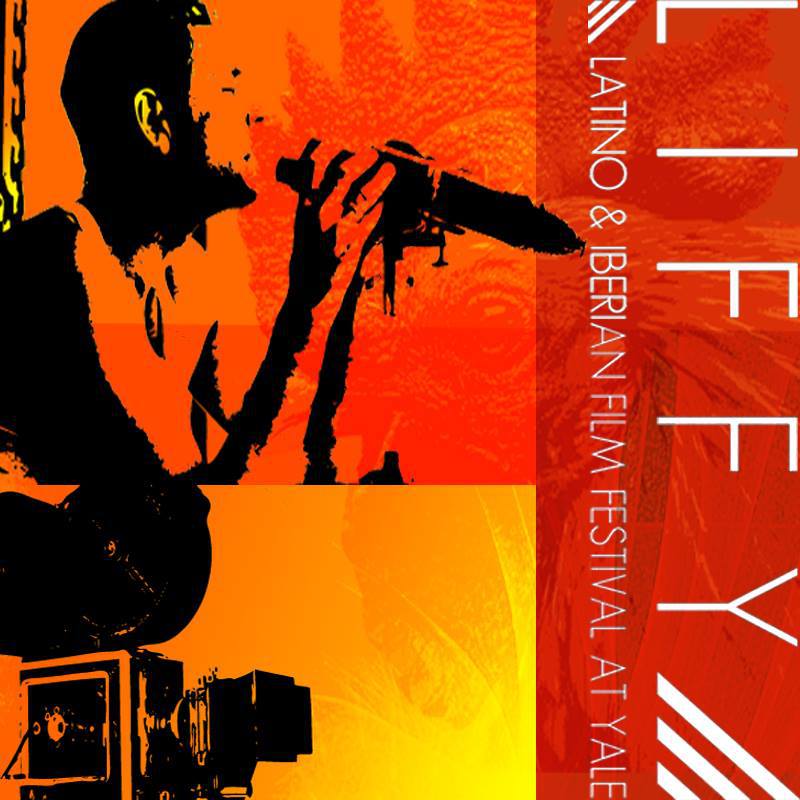Latino & Iberian Film Festival at Yale welcomes twenty directors from ten countries
The hybrid festival will conclude on Nov. 13. One film featured grapples with a Holocaust survivor’s trauma and the inherited legacies of the grandson of a Nazi.

Courtesy of Yale University
Bernhard Hetzenhauer is an accomplished film director. But in his latest release, “And There Was Fire in the Center of the Earth,” Hetzenhauer steps in front of the camera, becoming his own documentary subject.
Hetzenhauer’s film was screened at the Latino and Iberian Film Festival at Yale, which returned to campus for its 13th year on Nov. 7 and will conclude on Nov. 13. According to Asia Neupane, program director for the councils on Latin American and Iberian Studies and European Studies, the event will screen over 70 films and will bring to campus more than 20 directors.
LIFFY remained a hybrid film festival this year, with both online and offline screenings.
“We’re really invested in being back in person, and also allowing for there to be more access for people from all over the world to be able to watch films,” said Neupane. “We’ve had great success with [online screening] last year… Thousands of people screened our films from all over the world.”
The 2022 LIFFY Jury is made up of three jurors: Dahlia Fischbein, Miguel Rueda and Tatiana Rojas Ponce. The three members have extensive experience in documentary making, multimedia creations and cultural activism. With over hundreds of film submissions, there were roughly 70 films chosen to be screened.
Leo Mateus ’24, a student on the LIFFY team, hopes the six-week film festival will introduce students to Latin American creativity and art in general. He stressed that Latin American films cover themes and stories that are not commonly presented in American media.
“For me, it’s about bringing the space to speak Spanish or creativity from Latin America to Yale.” Mateus continued, “The film industry in Latin America is way less restrictive in a way and covers, in general, issues like Indigenous struggle and strife in Latin America. That’s an important thing to bring to the school because a lot of media here doesn’t cover that stuff.”
Senior lecturer of Spanish, Margherita Tórtora, founded LIFFY in 2015, and has worked since then as executive director of the event. Previously, she was the former director of the New England Festival of Ibero-American Films from 2010 to 2014.
“And There Was Fire in the Center of the Earth” tells the story of Vera Kohn, a Jewish woman of German-descent who moved from Czechoslovakia to Quito, Ecuador as a survivor of the Holocaust. Hetzenhauer said that a different film festival encouraged him to meet with Vera Kohn, a “witch,” “shaman” therapist who was nearing a hundred years of her life.
Tórtora praised Hetzenhauer’s story-telling abilities.
“I thought it was beautifully made, because he interviews Vera with much tenderness and really lets her speak,” Tórtora said. “He doesn’t interrupt her very much. We really get to hear her story and hear how appreciative she is for Ecuador, its people and how they’ve accepted her. It’s just beautiful to see the story of a Jewish German immigrant in Ecuador, and how grateful she is for the acceptance and the love she’s received in that country.”
The film ultimately explored the parallel experiences of Kohn grappling with the trauma of being a Holocaust survivor and Hetzenhauer struggles to understand his own inherited legacies as the grandson of an S.S. officer. The film was originally intended to focus on the everyday life of the nearly hundred-year old “witch” therapist, but Hetzenauer later stepped in front of the camera and became the second subject of the documentary.
“And it was never possible to do an interview without her being constantly aware,” Hetzenhauer said. “I said, ‘Okay, I have to step in front of the camera so she can focus on me and the conversations between us,’ and the camera disappears because she’s not paying attention anymore.”
Hetzenhauer attributed the difficulties of documentary film-making to the dynamic and unpredictable nature of the narrative. The film features intimate scenes with Hetzenhauer receiving therapy sessions from Kohn.
This year marks the 10th anniversary of Kohn’s death, as she passed away in 2012. Hetzenhauer reflected on how changing times and changing audiences can affect the viewing experience of a film he had filmed a decade ago.
“I think it’s a bit strange because here the projection was very dark and it’s sad that sometimes [it appears as if] she has no light in her eyes,” Hetzenhauer said. “I also think that the rhythm of the editing [is something that I would change]. I wouldn’t edit this slow now, I think that also depends on because we’re in the US and there’s different visual language and the different rhythm. In Europe, the rhythm is much slower in general.”
LIFFY will continue to screen movies and facilitate panel discussions until Sunday, Nov. 13.







